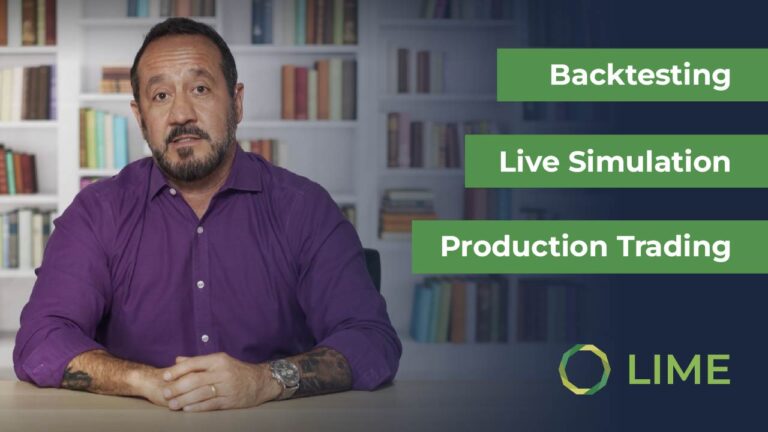Is inflation done, or is there more coming?
Stocks have had a dreadful 2022. A mostly unanticipated and stubborn surge in inflation triggered the Fed to tighten, hiking rates, and unwinding its asset purchase programs.
What investment strategy works to avoid having to choose?
A straddle-based strategy allows investors to profit from either a rapid rebound or a deeper sell off, avoiding the need for a directional choice.
The big question is: Will inflation turn the corner, or will it linger?
What could go wrong with this type of strategy?
The strategy provides investors with expected gains from a major market movement, regardless of its direction, but it will not perform well in sideways trading. As is common with a straddle, the potential loss is up to 100% of the invested capital.
If the invested amount is $1,000 and the stock market fails to “sink or swim” more than 5% by September 30, the potential loss is the entire $1,000.
Strategy Example:
One possible strategy involves opening a straddle 5% above and below the current SPY price as follows:
- Buy a call option contract with a strike 5% above the current SPY price.
- Buy a put option contract with a strike 5% below the current SPY price.
This combination allows investors to buy or sell the SPY at fixed prices. Therefore, generating a profit if the SPY moves more than 5% from today’s levels in either direction.
Hedge Example:
To defray the cost of the straddle above, the strategy includes selling a straddle 10% above and below the current SPY price, including.
- Sell a call option contract with a strike 10% above the current SPY price.
- Sell a put option contract with a trike 10% below the current SPY price.
This caps the total return, but materially reduces the required invested capital and potential loss.
Example Thesis and Timing:
The market’s outlook could be significantly clarified over the next 4-6 weeks through announcements related to:
Remember:
- Inflation and employment/wage related data.
- Housing market, consumer spending, and other early indications of recession risks.
- Global oil and US gasoline prices.
- FOMC rate announcements and policy guidance (next meetings are schedules for July 26-27)
- US dollar strength v. the Euro, Yen, and GB Pound.
Depending on the direction and intensity of this news flow over the summer, particularly around the next Federal Open Market Committee (FOMC) July meetings and its rate policy announcements, the market’s consensus could move dramatically either way.
- If the economy lands softly, it is likely earnings estimates are ratified, multiples expand, and equities rebound, or
- If the economy is still slowing down and inflation remains high beyond 2022, equities are likely to continue rolling downhill.
Information on Disclosure Agreements
© 2022 Securities are offered by Lime Trading Corp., memberFINRA & SIPC,NFA, Lime Advisory Corp is aninvestment adviser registered with the SEC. and Lime FinTech is a technology business. Collectively known as“Lime Financial” or “Lime” provide various trading, investment advisory services, and technology solutionsincluding web and mobile trading applications, to retail and institutional investors. All investing incurs risk,including but not limited to loss of principal. Further information may be found on our Disclosures Page.
Please read the Options Disclosure Document titled “Characteristics and Risks of Standardized Options”before trading options.
Options trading entails significant risk and is not appropriate for all investors. Certain options strategiescarry additional risk and investors may lose 100% of funds invested in a short period of time. Investors shouldconsult with a tax advisor as to how taxes may affect the outcome of any options strategy. Options tradingprivileges are subject to Lime Trading Corp. review and approval. Transaction costs may be significant inmulti-leg option strategies, including spreads and straddles, as they involve multiple commission charges.
This material has been prepared for informational purposes only and is NOT intended to provide nor should itbe relied on for tax, legal, or accounting advice. Please consult your own tax, legal, and accounting advisorsbefore engaging in any securities transactions as each individual investment(s) may result in diverse/adversetax implications that will affect the outcome of any investment strategy. No information presented hereinshould be considered an offer to buy or sell a particular type of security. This is not an offer or solicitation inany jurisdiction where we are not advertised to do business. Other fees, such as regulatory, service, or otherfees, may apply. Please visit our Pricing Page for further information. Investments involve risk, pastperformance does not represent future results. Diversification may help spread risk but does not protect in adown market. You may lose all of your investment. Investors should evaluate their financial situation,investment objectives, and goals before investing. Substantial risks are involved with electronic trading. Daytrading involves significant risk and is not suitable for all investors. Please see our Day Trading RiskDisclosure Statement for more detailed information. Trading on margin is not appropriate for every investor.Please see our Margin Disclosure Statement for information on risks. System response may vary due tomultiple factors including but not limited to trading volumes, market conditions, system performance, andother factors. Access to electronic services may be limited or unavailable during periods of peak demand,market volatility, systems upgrades, maintenance, or for other reasons.





